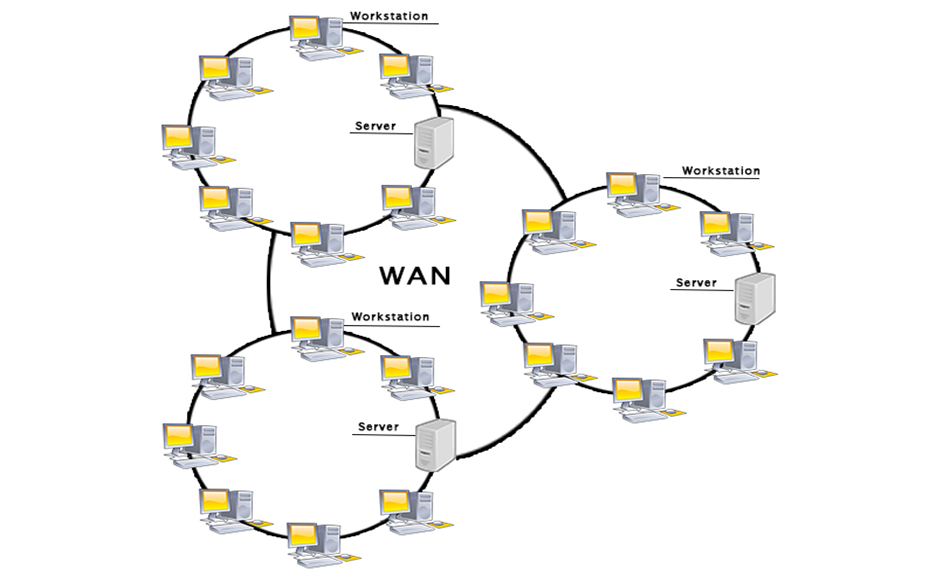A wide area network (WAN) is a telecommunications network that extends over a large geographic area for the primary purpose of computer networking. Wide area networks are often established with leased telecommunication circuits.
Businesses, as well as schools and government entities, use wide area networks to relay data to staff, students, clients, buyers and suppliers from various locations across the world. In essence, this mode of telecommunication allows a business to effectively carry out its daily function regardless of location. The Internet may be considered a WAN
Design options of WAN
The textbook definition of a WAN is a computer network spanning regions, countries, or even the world. However, in terms of the application of communication protocols and concepts, it may be best to view WANs as computer networking technologies used to transmit data over long distances, and between different networks. This distinction stems from the fact that common local area network (LAN) technologies operating at lower layers of the OSI model (such as the forms of Ethernet or Wi-Fi) are often designed for physically proximal networks, and thus cannot transmit data over tens, hundreds, or even thousands of miles or kilometres.
WANs are used to connect LANs and other types of networks together so that users and computers in one location can communicate with users and computers in other locations. Many WANs are built for one particular organization and are private. Others, built by Internet service providers, provide connections from an organization’s LAN to the Internet.
Private network
Of the approximately four billion addresses defined in IPv4, about 18 million addresses in three ranges are reserved for use in private networks. Packets addressed in these ranges are not routable on the public Internet; they are ignored by all public routers. Therefore, private hosts cannot directly communicate with public networks, but require network address translation at a routing gateway for this purpose.
https://www.cisco.com/c/en/us/products/switches/what-is-a-wan-wide-area-network.html
Connection technology
Many technologies are available for wide area network links. Examples include circuit-switched telephone lines, radio wave transmission, and optical fiber. New developments in technologies have successively increased transmission rates. In ca. 1960, a 110 bit/s (bits per second) line was normal on the edge of the WAN, while core links of 56 kbit/s to 64 kbit/s were considered fast.Today, households are connected to the Internet with dial-up, asymmetric digital subscriber line (ADSL), cable, WiMAX, 4G or fiber. The speeds that people can currently use range from 28.8 kbit/s through a 28K modem over a telephone connection to speeds as high as 100 Gbit/s using 100 Gigabit Ethernet
